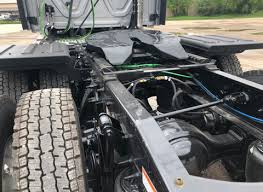നവം . 16, 2024 14:09 Back to list
5th wheel parts diagram
Understanding the 5th Wheel Parts Diagram
When it comes to towing heavy loads, the 5th wheel is a crucial component that facilitates the connection between a truck and a trailer, offering stability and safety. Understanding the parts of the 5th wheel and how they work together can greatly improve the towing experience, ensuring both efficiency and reliability.
A 5th wheel hitch resembles a pivot point and is typically mounted in the bed of a pickup truck. Unlike traditional hitches that connect at the rear bumper, the 5th wheel design allows for a more stable connection, which is essential for towing larger trailers, such as those used for recreational purposes, heavy equipment, or even livestock.
Components of the 5th Wheel
To comprehend a 5th wheel parts diagram, it’s important to familiarize yourself with its main components
1. Hitch Head This is the part that connects to the kingpin of the trailer. Typically, the head has a locking mechanism that secures the kingpin in place, preventing the trailer from disconnecting during travel. The design can vary, including a sliding or fixed hitch head for different towing preferences.
2. Kingpin The kingpin is a pivotal component that extends from the trailer’s front. It fits into the hitch head and acts as the main point for the trailer's connection to the truck. A strong, durable kingpin is crucial for safe towing.
3. Base Frame The base frame supports the entire hitch assembly and is attached to the truck’s bed. It distributes the load evenly and is essential for stability. The base frame needs to be compatible with the specific truck model to ensure a safe installation.
4. Jaw System Inside the hitch head, the jaw system grips the kingpin and secures it in place. Depending on the design, there may be single or dual jaw systems. A dual jaw system typically provides a tighter grip, leading to less movement and reduced noise during towing.
5th wheel parts diagram

5. Slider Mechanism For trucks with shorter beds, a slider mechanism can be beneficial. It allows the hitch head to shift backwards when making tight turns, reducing the risk of the trailer hitting the cab of the truck.
6. Safety Chains These are required by law and provide an additional layer of security. If the hitch were to fail, the safety chains would help prevent the trailer from separating completely from the truck.
7. Adjustment Handle This component allows for easy adjustment of the hitch height, which is necessary for aligning the truck and trailer properly. Proper alignment ensures safe towing and prevents excess strain on the hitch and kingpin.
Maintenance and Safety
Understanding the parts of the 5th wheel is not only about knowing how they function, but also about ensuring they are well-maintained. Regular inspections are necessary to check for wear and tear, particularly on the locking mechanism and jaw system. Lubrication is vital to prevent rust and ensure smooth operation.
Additionally, always adhere to the manufacturer's specifications regarding weight limits. Exceeding these limits can compromise safety and lead to catastrophic failure. Always ensure that the installation is secure and double-check that the kingpin is properly locked in place before starting your journey.
Conclusion
Familiarity with the 5th wheel parts diagram is essential for anyone engaged in towing operations. Understanding each component and its function not only enhances the safety and efficiency of towing but also empowers the user with the knowledge required for proper maintenance and safe operation. As you prepare for your next adventure on the road, take the time to familiarize yourself with your 5th wheel setup to ensure a smooth and secure towing experience. Whether you are a seasoned tower or a novice, knowledge is the key to a successful journey.
-
Durable Germany Type Suspension for Heavy Duty Trucks & Trailers
NewsAug.23,2025
-
American Type Welding Suspension Series: Strong, Reliable Hooks
NewsAug.22,2025
-
Hezhen 1-3mm Luminous Stone- Shijiazhuang Land Auto Component Ltd.|Durability&High Luminosity
NewsAug.18,2025
-
Hezhen 1-3mm Luminous Stone - Shijiazhuang Land Auto Component Ltd.
NewsAug.18,2025
-
Hezhen 1-3mm Luminous Stone - Shijiazhuang Land Auto Component Ltd.|Durable & Versatile
NewsAug.18,2025
-
Hezhen 1-3mm Luminous Stone - Shijiazhuang Land Auto Component Ltd.|Durable Glow-in-the-Dark Solution&Versatile Applications
NewsAug.17,2025
